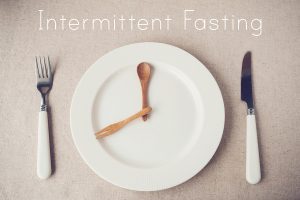 There’s a diet trend that many health conscious seniors are trying: fasting. And by “diet trend” I don’t mean that seniors are fasting for weight-loss. Partial fasts are now being recommended as an effective deterrent to disease and aging.
There’s a diet trend that many health conscious seniors are trying: fasting. And by “diet trend” I don’t mean that seniors are fasting for weight-loss. Partial fasts are now being recommended as an effective deterrent to disease and aging.
If the thought of going 12 hours without eating seems impossible, there are plenty of smart and easy ways to do this. You may just improve your health, energy (and grocery bills!), not to mention lose a few pounds.
Health Benefits for Senior Fasting
As well as aiding weight-loss, not eating for a day (which can be a varied period of 12, 16, or 24 hours) provokes many health benefits. Here are some of the bodily functions that improve when seniors fast:
- Better cardiovascular health
- Slows proliferation of cancer cells
- Protective of brain cells, improves memory, clarity and focus
- Ameliorates digestive problems
- Facilitates detoxification
- Improves energy production in cells and mitochondria
The Chemistry of Fasting
The body burns fuel for energy and in humans that fuel is glucose, a sugar. It is found in the carbohydrates we eat, such as grains, dairy products, fruits, vegetables, beans—and of course—from sweets. The liver and muscles store glucose and release it into the blood stream whenever the body needs it.
During fasting, the process shifts. After about eight hours of fasting, the liver will use up the last of the glucose reserves. That’s when the body enters into fasting mode and shifts the metabolism to burning other sources, including protein and fat.
The process of gluconeogenesis begins. Deprived of glucose, the system looks for other readily available molecules that can be burned as fuel. Fat is usually abundant, so the liver starts to transform fats into ketones and sends it to cells (including the brain) where it used to provide energy.
Why Ketogenic Diets Work
When cells burn ketones instead of glucose, there are fewer free radicals produced, which is why ketones are called a “cleaner fuel” for the body. It is also behind the success of ketogenic diets. Deprived of a lot of carbohydrates, there is less glucose available. Cells start to burn fat for fuel, including the fat in our own bodies.
But the shift from glucose-burning to fat-burning doesn’t happen immediately. The body has to adapt biochemically. Because our Western diets are overloaded in carbohydrates (and often low in fats), some people lose metabolic flexibility, the ability to shift fuel sources.
That where partial fasting is beneficial. It improves metabolic flexibility. Metabolic flexibility is the ability to respond or adapt to conditional changes in metabolic demand.
Intermittent Fasting for Seniors
I discussed several ways to implement a partial fast in a previous post, but to summarize, the easiest way is to not eat after dinner, and delay eating your first meal the next day. You can set your fasting period for a minimum of 12 hours, or increase the health benefits by extending to 14, 16, or 18 hours.
For me, personally, the biggest challenge is to stop after-dinner snacking. Most experts recommend not eating for two to three hours before going to sleep. This gives the body time to digest. I struggle with sweets at that time. I’m working on kicking that habit.
Risks of Fasting
Although it is safe (fasting is a regular part of many cultures and religions), it can be risky for some people with chronic conditions requiring medications, people who are underweight, those with eating disorders, children and adolescents, and women who are pregnant or breastfeeding.
As always, check with your doctor. It’s always wise to follow guidelines of health professionals. It is generally safe to go without food for a day or half-day. Drink plenty of water. It’s also important to break a fast with nutritious food, avoiding temptation to eat junk or to binge.
For me, when I stop eating after dinner, my digestive system feels better, and I wake up with less brain fog and fatigue. Just that simple restriction alone, tells me I’m doing something wise for my aging body.
What about you? Have you tried partial fasting? It may be more than just a fad for diet fanatics.

Recent Comments